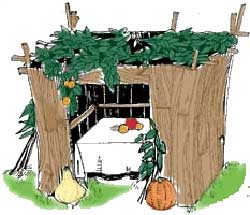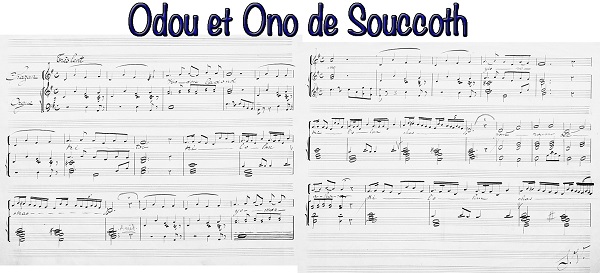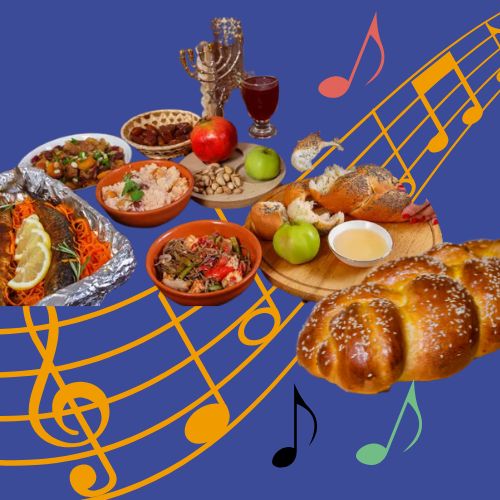
Here is a playlist on the occasion of the Jewish holiday Sukkot.
Sukkot commonly translated as Feast of Tabernacles or Feast of the Ingathering is one of the three pilgrimage festivals (with Passover and Shavuot).
Starting on the 15th of Tishri and lasting for seven days, Sukkot has a double significance. The one mentioned in the Book of Exodus is agricultural in nature—”Feast of Ingathering at the year’s end” (Exodus 34:22)—and marks the end of the harvest time and thus of the agricultural year in the Land of Israel. The more elaborate religious significance from the Book of Leviticus is that of commemorating the Exodus and the dependence of the People of Israel on the will of God
The Hebrew word sukkot is the plural of sukkah, “booth” or “tabernacle”, which is a walled structure covered with plant material such as overgrowth or palm leaves. As stated in Leviticus, it is also intended as a reminiscence of the type of fragile dwellings in which the Israelites dwelt during their 40 years of travel in the desert after the Exodus from slavery in Egypt. Throughout the holiday, meals are eaten inside the sukkah and many people sleep there as well.
 Another element of this holiday is the lulav (לוּלב), formed by the four plants that are the fruit of a citron tree, a ripe, green, closed frond from a date palm tree, boughs with leaves from the myrtle tree, and branches with leaves from the willow tree
Another element of this holiday is the lulav (לוּלב), formed by the four plants that are the fruit of a citron tree, a ripe, green, closed frond from a date palm tree, boughs with leaves from the myrtle tree, and branches with leaves from the willow tree
During the morning prayer, we wave the lulav in the the four cardinal points, as well as above and under, to signify the omnipresence of God.
Listen to the playlist Sukkot, 2nd part





